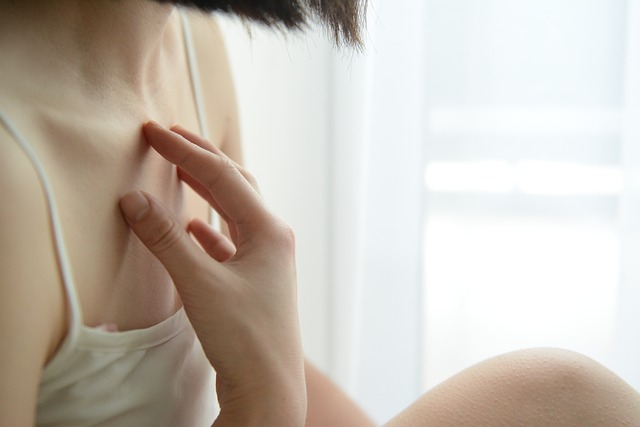Wart removal for hands and feet involves understanding HPV causation, wart type (common, plantar, flat), size, location, severity, personal preferences, and medical history. Safe options include over-the-counter salicylic acid products and cryotherapy with liquid nitrogen. Adult treatments like cryotherapy, topical medications, and laser therapy offer diverse solutions. Prevention strategies, such as hand hygiene, foot care, proper nutrition, and rest, are crucial to minimize recurring warts. Regular consultation with healthcare professionals ensures personalized advice for effective wart removal and prevention.
Looking for effective wart removal solutions for your hands or feet? Whether for children or adults, understanding the right approach is crucial. This comprehensive guide delves into various wart removal methods, catering to unique needs. From safe techniques for kids to advanced options for adults, we explore how to eliminate these skin growths effectively. Learn about prevention strategies to avoid recurrent warts and discover the best practices for managing them on your hands and feet.
- Understanding Warts: Types and Causes
- Safe and Effective Removal Methods for Children
- Wart Removal Options for Adults
- Prevention Strategies for Recurrent Warts
Understanding Warts: Types and Causes
Warts are small, rough growths on the skin caused by the human papillomavirus (HPV). They can appear anywhere but are most common on hands and feet. There are several types of warts, including common warts, plantar warts, and flat warts, each with distinct characteristics. Common warts often show up as small, rough bumps on areas like fingers and knuckles, while plantar warts grow into the skin, causing hard, painful lumps most frequently on the heels or sides of the feet. Flat warts are usually small, smooth, and flesh-colored.
Understanding what causes these growths is key to choosing the right wart removal method. HPV spreads through direct contact with infected skin, often during activities like walking barefoot in public places or touching contaminated surfaces. While they can be harmless, warts may cause discomfort or pain. For children and adults alike, effective wart removal for hands and feet involves considering factors such as the type of wart, its size, location, and severity, as well as personal preferences and medical history.
Safe and Effective Removal Methods for Children
When it comes to wart removal for hands and feet, especially in children, safety is paramount. For kids, simple and gentle methods are preferred to avoid causing any discomfort or distress. One effective yet mild approach is the use of over-the-counter salicylic acid products specifically designed for warts. These can be applied at home with guidance from a healthcare professional, ensuring minimal pain and potential side effects.
Additionally, freezing warts with liquid nitrogen (cryotherapy) is another safe option that many medical practitioners recommend. This quick and relatively painless procedure can be performed in a doctor’s office and often yields positive results. Both methods offer non-invasive solutions for wart removal for hands and feet, making them suitable for children who may have sensitive skin or are apprehensive about more aggressive treatments.
Wart Removal Options for Adults
When it comes to wart removal for hands and feet, adults have a variety of options to choose from. One common and effective method is cryotherapy, where warts are frozen off using liquid nitrogen. This procedure is typically quick and relatively painless, making it a popular choice among adults. Another option is topical treatments, such as salicylic acid or immunomodulators, which can be applied at home over several weeks to gradually remove the wart.
Laser treatment is also available for more persistent warts. This method uses concentrated light energy to destroy the wart tissue, offering a permanent solution for some cases. However, it can be more expensive and may cause temporary skin irritation or changes in pigmentation. As always, it’s essential to consult with a healthcare professional to determine the best course of action based on the size, type, and location of the wart, ensuring effective and safe wart removal for hands and feet.
Prevention Strategies for Recurrent Warts
Wart removal for hands and feet can be a recurring concern, especially in children and adults prone to verrucae. Beyond removal, preventing future outbreaks is key. Regular hand hygiene, promoting good foot care, and avoiding direct contact with warts are foundational strategies. Keeping nails trimmed and avoiding sharing personal items like towels or shoes can also help safeguard against transmission. Additionally, strengthening the immune system through adequate nutrition and rest can make a difference in the body’s ability to fight off viral infections that cause warts.
For those who have experienced recurrent warts, consulting a healthcare professional for personalized advice is advisable. They may recommend specific treatments or topical solutions tailored to prevent future growths. Remember, consistent prevention efforts are crucial to minimize the occurrence and impact of unwanted warts on hands and feet.
When it comes to removing warts from hands and feet, both children and adults have several safe and effective options. For kids, simple at-home remedies or medical treatments like salicylic acid can be highly successful. Adults may opt for more advanced methods such as cryotherapy or laser treatments. Preventing recurrent warts involves keeping skin hydrated, wearing protective footwear, and avoiding contact with contaminated surfaces. By understanding the different types of warts and exploring suitable removal methods, you can achieve smooth, wart-free skin on hands and feet.
